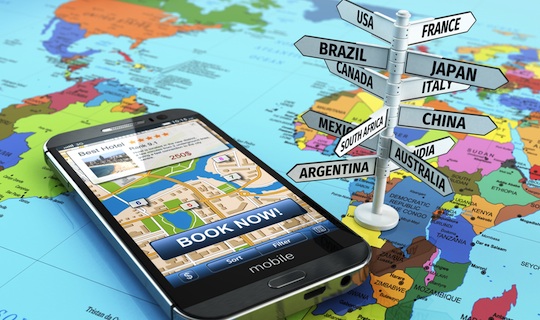Winning over the ‘silent traveller’ in the face of disruption
Share

Few industries have been hit harder by disruption than hospitality and travel. Kevin Ross outlines the ways travel industry businesses can set their brand apart and win over today’s traveller.
Disruption is everywhere, invading every industry and transforming everything we thought we once knew. One sector which has undergone rapid transformation and will continue to experience significant disruption is the travel industry. In the past, travel brands sought out traditional advertising methods and fared well doing so. Online has changed everything.
Recent technologies and trends are shaking up how the industry operates, increasing traveller autonomy and dramatically altering the way travel companies reap success. The internet has equipped consumers with a wealth of information and the proliferation of online review websites has enabled them to interact with each other, sharing opinions and experiences. The power now resides with the consumer. Today’s travellers have a world of choice at their feet.
The top consumer trends shaping the travel industry today are mobile and user-generated content. Mobile is overwhelmingly the preferred information vehicle for consumers, with 56% of people surveyed by SDL using their smartphone to check flight statuses and 62% saying it’s important for hotels to allow bookings on mobile devices.
Today’s travel companies are dealing with the ‘silent traveller’; the consumer that wants information and plans ahead but rarely talks to the brand. This presents both an opportunity and a challenge for travel companies: an opportunity because consumers are asking for content and a challenge because they would prefer it comes from other consumers.
For travel companies wanting to stand out from a growing crowd of new players and capture attention, there are a three ways to improve the customer journey and win over the silent traveller.
1. Be the source
Our information-rich landscape has drastically changed how consumers book travel. They consider volumes of travel listings including promotions, imagery, reviews and offers. Expedia Media Solutions and Millward Brown looked at the 45 day path to purchasing a UK vacation package and found that the typical traveller on average made 35 visits to travel sites before booking, with a clear spike as they approached the date of booking.
Travel consumers are hungry for informative and useful content. To break through to the silent traveller, be the source that guides them through their research journey, not the salesman they avoid. Earn the silent traveller’s attention and interest by providing the relevant and valuable content they’re searching for.
The rise of user-generated content also means your brand is likely to appear on Yelp and TripAdvisor without your approval or notification. Have a presence on those sites and provide useful content about your own products or services. Go where the conversation is happening.
While you want to get your brand’s voice out there amongst the wealth of user-generated content, you can also use it to your advantage to build a detailed map of the buyer journey. From awareness to evaluation, commitment and all the customer experience stages in between, marketers need to listen to and track the conversations taking place online.
2. Personalise
Today’s consumers want a one-on-one experience with your brand. They want to feel like they are your only customer and be served as such. The emergence of new players vying for a piece of the pie means your customer has more options. If the reservation agent doesn’t speak their language or your website doesn’t remember them as an existing customer, you’ve lost them.
Leading European holiday park operator Roompot Parks has recognised the importance of personalisation, tailoring the customer experience with smart technology that identifies and showcases the right holidays to suit each traveller’s preference.
3. Be consistent
In today’s omnichannel world, the customer journey is less linear and fragmented than ever before. To create the sense of a brand journey, you need to maintain customer experience consistency across every channel. Travellers are resourceful and will use a range of channels to research their purchases and the experience of others.
They’re jumping across devices, platforms and locations, and your brand needs to keep up with them every step of the way. Guide your customers across channels and through their journey by establishing a consistent presence across platforms (whether owned or user-generated) and locations (online and offline).
While customer experience consistency may be a challenge for a company that runs more than 30 regional multilingual websites, Dubai-based airline Emirates effectively uses technology to ensure its content and branding are consistent. Emirates employs technology that enables marketers to establish a centralised content repository so they can copy website components (headers, navigational bars, text areas and images) across over 30 web presences and localise them as needed.
In an industry that’s increasingly globalised, connected and brimming with competition, it’s never been more important to think about how to set your brand apart. The way to win over today’s silent travellers is by improving your customer experience. Offer today’s silent travellers the information they’re looking for, personalise their experiences, maintain consistency and enjoy the journey to success.
Kevin Ross is general manager ANZ of SDL















